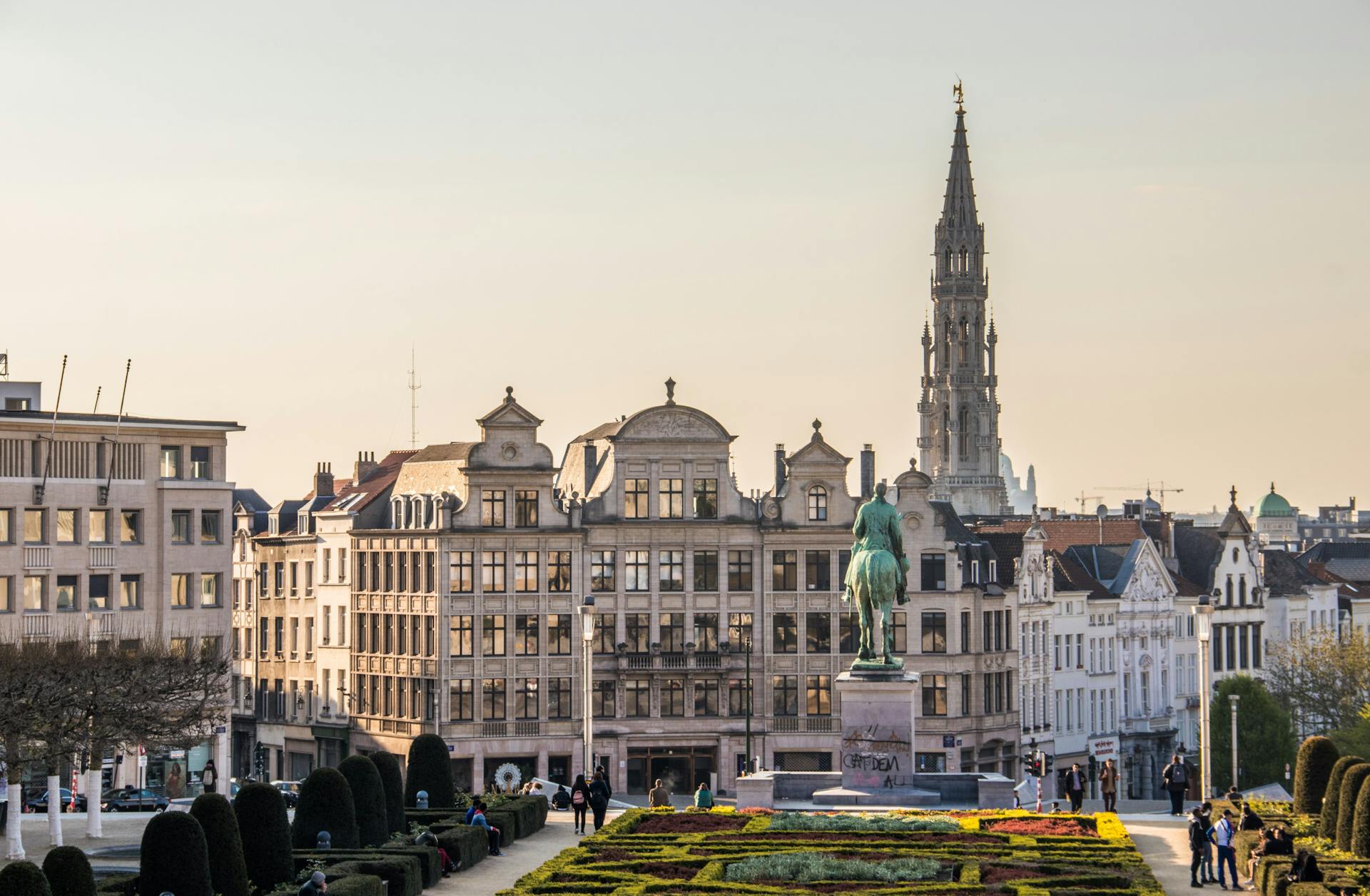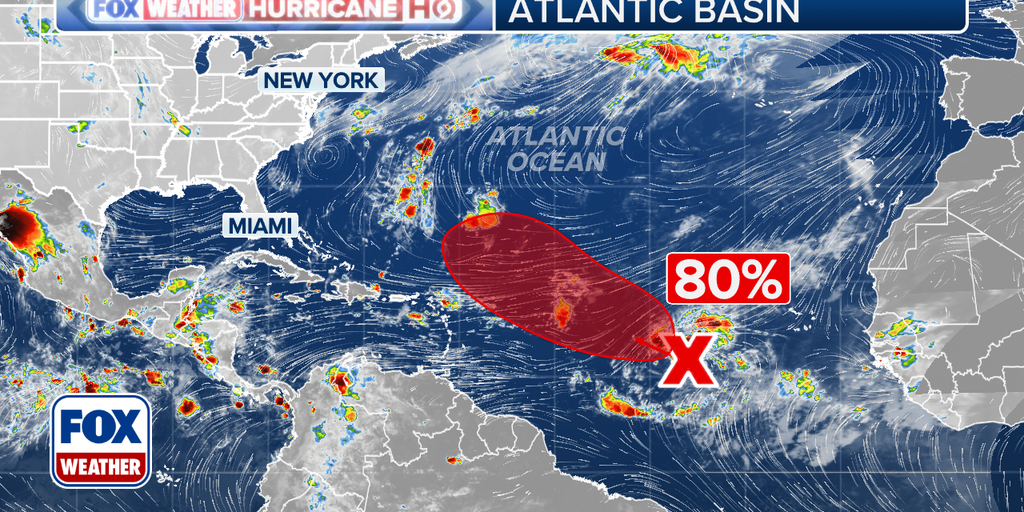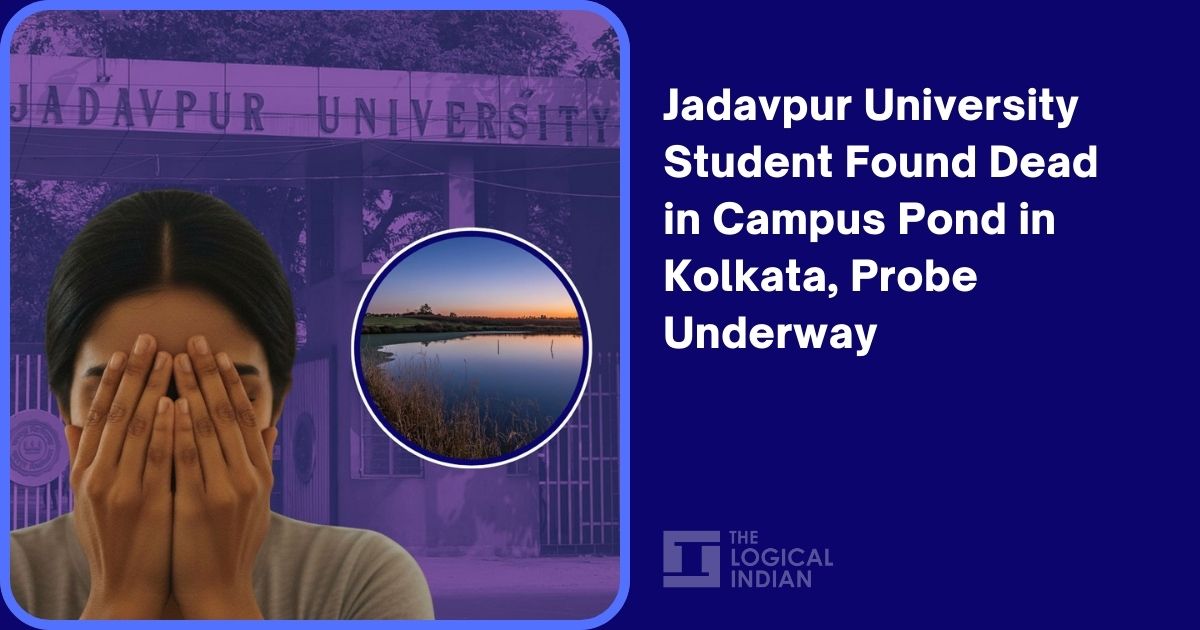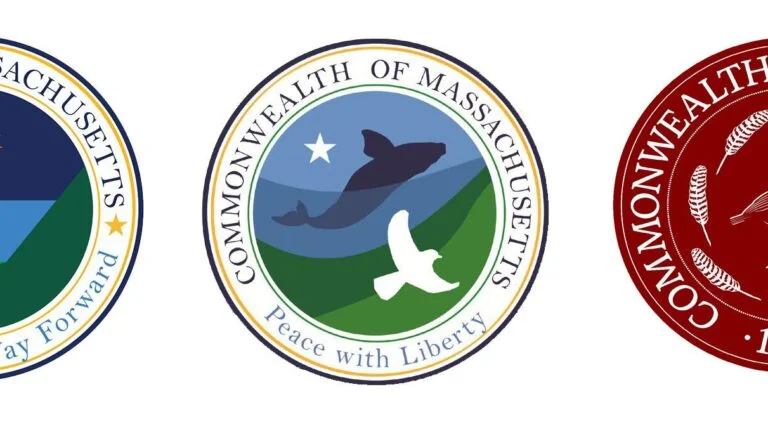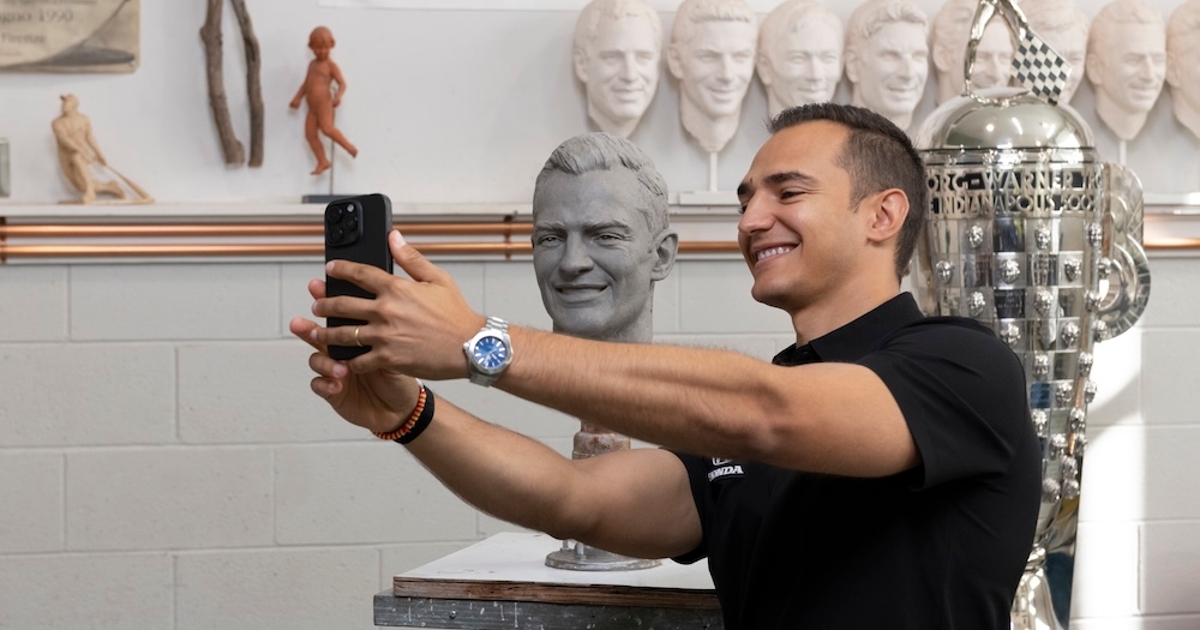
Alex Palou and sculptor Will Behrends have revealed the full-size clay model that will be used as the basis for his likeness on the legendary Borg-Warner Trophy. The bas-relief image will be in honor of his victory in May’s 109th running of the Indianapolis, and he will become the 112th face on the trophy.
The 5ft 4.75in, 110lb trophy was commissioned by Borg-Warner Corporation (forerunner of BorgWarner Inc.) in 1935 to commemorate the Indy winner, and it included likenesses of the 24 drivers who had already won the race. Since 1936, the winner has had his name, average speed and visage added to the trophy in sterling silver.
The one face that is not silver is that of the legendary Tony Hulman, who purchased and saved Indianapolis Motor Speedway in 1945 and remained owner until his death in 1977. His face is, quite rightly, carved in 24-karat gold.
Palou, who this year claimed his fourth NTT IndyCar Series championship in five seasons, scored a stunning tally of eight wins in 17 rounds, but of course the most prestigious of these was without doubt the Indy 500.
The Chip Ganassi Racing-Honda driver, who had never previously won an oval race, made his decisive move on 2022 winner Marcus Ericsson at the start of the 187th lap, and despite being stuck behind two squabbling backmarkers, kept his cool to claim victory. It was the seventh Indy 500 win for team owner Chip Ganassi, when one includes his co-ownership of Patrick Racing when Emerson Fittipaldi won back in 1989. Since then, Ganassi’s Indy winners have been Juan Pablo Montoya (2000), Scott Dixon (2008), Dario Franchitti (2010 and ’12), Ericsson (2022) and now Palou.
Palou, 28, is one of 804 drivers to have started the Indy 500 since the inaugural race in 1911, and he is the 76th different winner. His form at Indianapolis Motor Speedway has always been impressive. On his debut with Dale Coyne Racing in 2020, he started seventh despite a broken weight-jacker on his qualifying run, and probably only inexperience with traffic on ovals – and Helio Castroneves’s vast experience – prevented Palou from winning the race in his first start with Ganassi in 2021. He entered this year’s race with 119 laps led at the Brickyard, having hit the front in his previous four outings there. But he insists there was no sense of inevitability about clinching at the Brickyard, not even in this, his greatest year of racing.
“You never know, especially at Indy,” he told RACER. “I mean, I know going to the 500 with Ganassi I would always have a good car and there would be a chance for me to lead and fight for the win. But you can’t ever know that you’re going to have that perfect day where everything comes together. There are many good drivers who have been strong at Indy but never won it, and so many good drivers that look like they’re going to win it and they don’t win.
“So no, I never thought for sure that I would win it one day. I did know that I would be given everything I needed to win it – I certainly had done the work and I certainly had the team – but you can never be certain about the race.”
After pulling the trigger with 14 laps to go, Palou admits to frustration with the two not-quite-lapped Rahal Letterman Lanigan cars of Devlin de Francesco and Louis Foster, as he had flashbacks to 2021.
“That year, I had the faster car than Helio, but he had a lot more experience and knew how to win it,” admitted Palou. “Helio knew how to read the race and what he needed to win it, taking into account the lapped cars, and I remember not thinking about that and not knowing what would happen.
“Looking back and studying how he beat me helped me this year to think ahead and consider that traffic and what effect it would have on my car. So for sure, I’d say that without the 2021 experience, I wouldn’t have won this year, I wouldn’t have worked out how to use the traffic to our advantage. As soon as I saw the opportunity to pass Marcus, I took it because I felt I could use their draft, and the dirty air from three cars would help to keep Marcus behind.”
As all have seen, gaining experience and applying the lessons learned has been Palou’s métier method from Day 1 in IndyCar, which is why he’s become ever more formidable. This year’s experience at the 109th running of the Indy 500, he said, will make him stronger for the 110th.
“Yes, there’s always stuff that you learn,” he said. “Every edition of the 500 is so complex, and this year we identified some things we could have done better, to have more cards in our favor. I’m not going to tell you them all, but there are things you look back on, like putting yourself in danger of being caught out by a yellow by pitting on a certain lap, or not pitting on a certain lap… Or then on my side, a restart where I didn’t defend well and I lost a place. It all comes down to details and there are always details you can refine for the next race. You’re always learning.”
And now Palou is learning firsthand how huge was his achievement on Memorial Day Weekend. It’s starting to sink in.
“A little bit, yes,” he said. “I thought I knew exactly how it would feel, but you realize with days like this in Will’s studio, that it’s a big deal. I like knowing that in 50 years, when I visit Indy, I’ll still be able to go to the Museum and see the Borg-Warner Trophy and see my face, and I’ll remember that day forever. And if IndyCar and the Indy 500 have 50 more years or 100 or 500, whatever happens, my face is on that trophy forever.
“But I think, until I actually see my face on the Borg-Warner, I won’t truly realize what it all means. It’s beautiful to be in this position. And probably every year I don’t win the 500, I’ll appreciate it even more!”
In the meantime, he’s happy with his life-size clay head.
“Yeah, it’s amazing,” he exclaimed. “Well, actually, it was a little bit scary when I saw it, because it’s the first time I’ve seen my face like this and in real-life scale. But I think Will has done a great job. It looks like me. And just the whole experience of being here with him in his studio the past couple of days has been amazing.”
Wisconsin-born Behrends, who began sculpting at the age of 26, has immortalized many legendary figures including Willie Mays, Hank Aaron, Henry Ford II and Dick Cheney, but has become at least as renowned as the sculptor for the Borg-Warner Trophy. Arie Luyendyk was the first likeness he carved in 1990, which makes Palou his 36th.
Speaking from his studio in Tryon, North Carolina, Behrends said: “I did photos to produce this full-size clay study in preparation for today. We had dinner last night and then today we had a sitting and I made some notes, and he had some comments. It was a very relaxed and fun environment; he’s a good guy.
“There are always changes once you see the guy in person. Something that doesn’t always come out in photos is the actual structure of the face, the bone structure, cheekbones and so on. So I made some adjustments, and I’m pleased with it and I think everyone else is, too.
“Of course, this is just a study, learning the face. I’ll do this again in miniature for the trophy. It’s getting easier now I do it this way, because as I create the life-size study, I’m learning, internalizing, memorizing features and the look of the person, and that helps the creation of the smaller one to go much faster.
“As long as I’m able, as long as BorgWarner will have me, I’ll keep doing this. I love it.”
Palou’s face on the Borg-Warner is set to be unveiled in Indianapolis in November.
